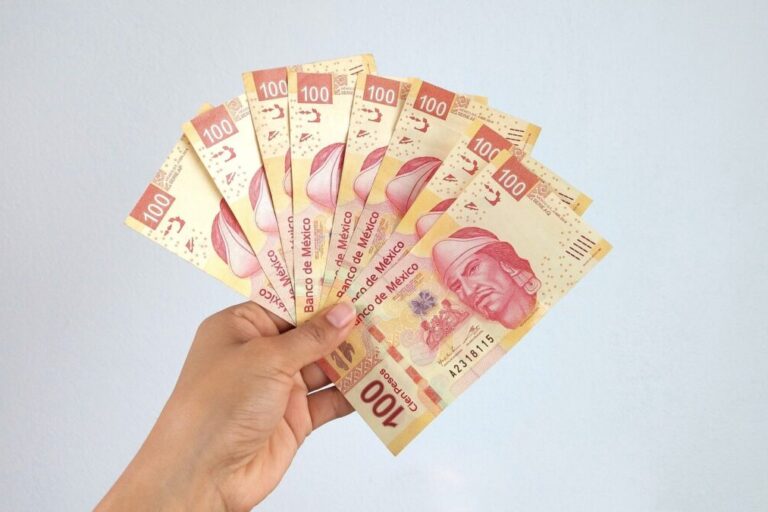Whether you’re sending money to loved ones in Mexico, planning a vacation, or simply curious about the country’s economy, understanding the Mexican peso (MXN) is essential. As of 2025, the peso remains one of Latin America’s most traded and influential currencies. Its enduring global relevance reflects Mexico’s rich cultural heritage, dynamic economy, and evolving role in international finance.
Overview of the Mexican Peso
The Mexican peso is the money used in Mexico. It is one of the most traded currencies in the world, ranking at number sixteen. The peso symbol is “$,” and it breaks down into 100 centavos. The code for this currency is MXN.
Current Banknotes and Coins
As of 2025, the Bank of Mexico gives out the banknotes below:
- 20 pesos
- 50 pesos
- 100 pesos
- 200 pesos
- 500 pesos
- 1,000 pesos
Coins in circulation include:
- 5 centavos
- 10 centavos
- 20 centavos
- 50 centavos
- 1 peso
- 2 pesos
- 5 pesos
- 10 pesos
- 20 pesos
The 20-peso coin came out in the past few years. It stands out because it has twelve sides and special designs to remember big events.
Historical Context
The word “peso” comes from Spanish. It means “weight.” This shows that the peso started out as a coin made of precious metals. The Mexican peso comes from the Spanish dollar. That dollar was used in the Americas and in Asia during the colonial time. In 1993, Mexico brought in the “nuevo peso” because there was a problem with hyperinflation. One “nuevo peso” was the same as 1,000 old pesos. In 1996, they stopped using the word “nuevo” and started calling the money just the peso again.
Exchange Rates and Economic Outlook
As of May 2025, the exchange rate is about 1 USD to 19.26 MXN. The peso has gone up and down because of things happening in the world and what is going on with rules here at home. In early 2025, the peso got stronger. A lot of people started to call it the “Super Peso.”
Mexico’s government expects the economy to grow by 1.5% to 2.3% in 2025. It also predicts inflation to be at 3.5%. These numbers take into account changes in international trade and the country’s money policies.
Security Features
Modern Mexican banknotes have several new security features to stop people from making fake notes. These include things like watermarks, special ink that changes color, tiny text, and shiny, holographic parts. The 20- and 50-peso notes are printed on plastic, which makes them last longer and keeps them safer from being copied.
Cultural Significance
The Mexican peso is not just used for buying things. It is a sign of the country’s deep cultural past. The banknotes show well-known people from history, like Benito Juárez and Sor Juana Inés de la Cruz. This shows that Mexico has a long history and that the people there have helped in arts and politics.
FAQs about the Mexican Peso
What is the symbol for the Mexican peso?
The symbol for the Mexican peso is “$”. This is the same sign used for the U.S. dollar. In Mexico, when you see “$”, it means pesos, not dollars.
How many centavos are in one peso?
One Mexican peso is made up of 100 centavos.
What is the largest denomination of Mexican currency in circulation?
The highest Mexican bill you will find now is the 1,000-peso note. Many people do not use it much for buying things every day.
Can tourists use U.S. dollars in Mexico?
Some shops and places in the tourist areas do take U.S. dollars. But it is better to use pesos. You will get the correct price and it will be easier for you.
The Mexican peso has a few nicknames that people use. Some common ones are “lucas,” “lana,” “marimba,” “morlacos,” “papiros,” and “varos.”
Is it safe to exchange money at the airport?
Airport money exchange is fast and easy. But, you often get rates that are not as good. In most cases, it is better to go to a local bank or an official exchange store. This way, you get better rates for your money.
Are old peso coins still accepted?
Old peso coins from before 1993 are not used anymore. You can only use the current coins and bills that say MXN on them. Only these new ones will be accepted now.
Why is the peso sometimes called the “Super Peso”?
The peso is sometimes called the “Super Peso” because there are times when it gets much stronger than other big currencies. This usually happens when the country makes economic changes or when things around the world are going well for them. That is when people say the peso is doing really good.

